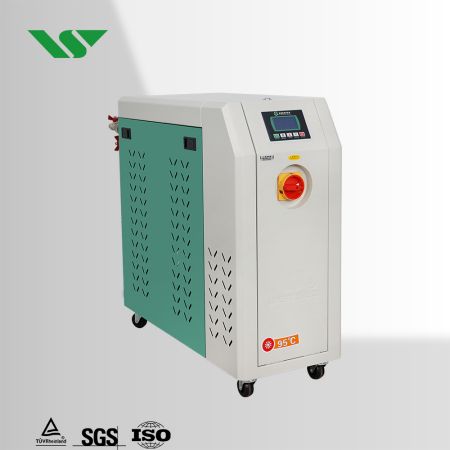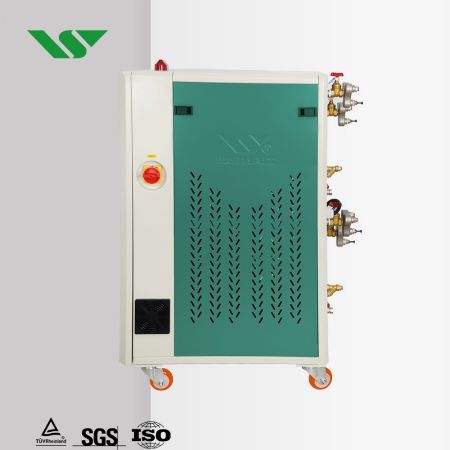What is application of mold temperature controller in injection molding industry?
2024-05-15 Page view:
1. Types of Mold Temperature Controllers

In the realm of injection molding, mold temperature controllers come in two main types: water-based and oil-based. Depending on the specific requirements of the injection molding process, various models of mold temperature controllers are available.
Water-based controllers are suitable for operations where the maximum outlet temperature is typically around 120 ° C. On the other hand, oil-based controllers are employed when the working temperature exceeds or exceeds 150 ° C.
Typically, a mold temperature controller equipped with an open water tank for heating is ideal for both water and oil temperature control. These controllers maintain outlet temperatures ranging from 120 ° C to 180 ° C, featuring a straightforward design and cost-effectiveness.
Moreover, an advanced version of the water-based controller, capable of handling temperatures up to 180 ° C, utilizes water's superior thermal conductivity compared to oil at temperatures exceeding 90 ° C. This enhancement enables efficient high-temperature operations.
Additionally, there exists a forced-flow mold temperature controller designed for operations above 150 ° C, utilizing thermal oil for safety reasons. To prevent overheating, this controller employs a forced-flow pumping system, with a heater comprising stacked tubes housing finned heating elements for optimal heat transfer.

2. Temperature Control Features of Mold Temperature Controllers
Maintaining uniform temperature distribution across the mold at various points throughout the injection cycle is crucial. The temperature within the mold cavity peaks post-injection when the molten material encounters the cold mold walls, subsequently dropping to its lowest point during product ejection. The primary function of a mold temperature controller is to sustain temperatures within a specified range (Tmin to Tmax), minimizing temperature differentials (ΔT) during production cycles.

Several methods are employed for mold temperature control:
1. Fluid Temperature Control: This widely used method offers sufficient control accuracy for most applications. However, temperature fluctuations within the mold can occur due to unmeasured thermal factors, such as variations in the injection cycle, speed, melt temperature, and ambient temperature.
2. Direct Mold Temperature Control: This method involves installing a temperature sensor inside the mold, delivering higher control accuracy. Key features include consistent temperature alignment between the controller and mold, along with direct measurement and compensation of thermal factors. It typically provides better mold temperature stability and production process repeatability.
3. Combined Control: A hybrid approach that simultaneously regulates fluid and mold temperatures. Proper sensor placement within the mold, considering cooling channel configuration and part quality influence, is essential for effective joint control. Integration of one or more mold temperature controllers with the injection molding machine controller is accomplished through digital interfaces for enhanced operability, reliability, and interference resistance. Automated control features enable seamless communication between the control unit and injection molding machine, optimizing cycle times and ensuring injection part quality stability.
Efficient mold temperature control not only facilitates reaching and maintaining working temperatures but also impacts surface quality, material flow, shrinkage, cycle time, and part deformations.
-
2024-09



